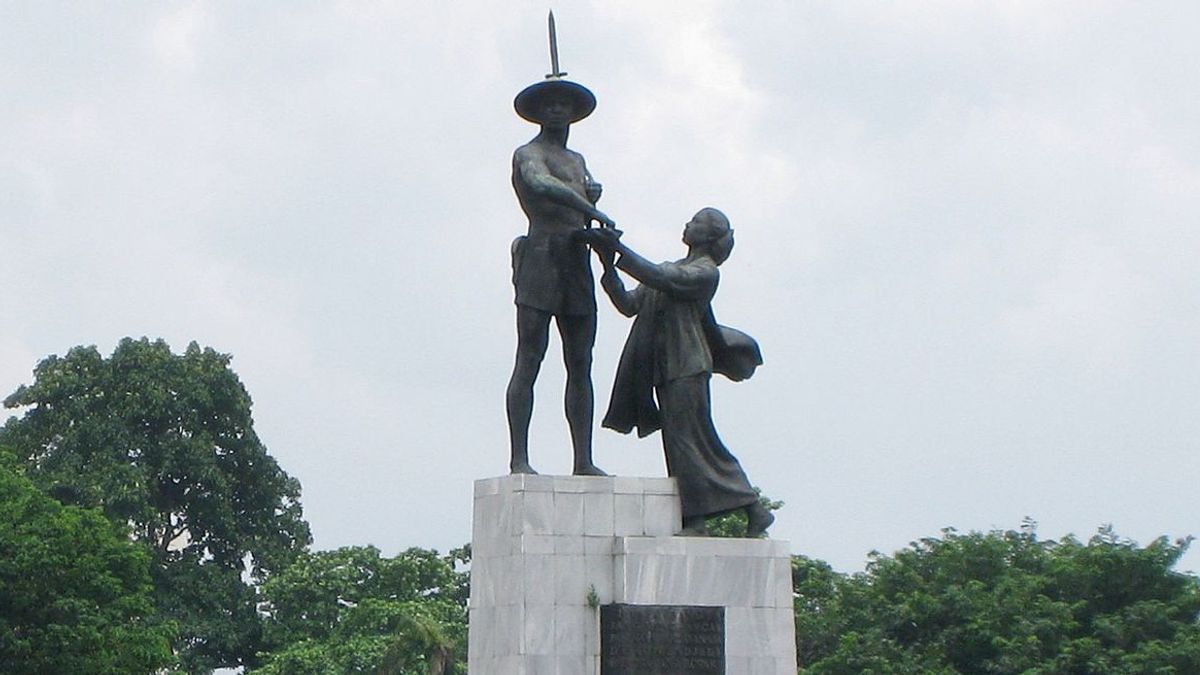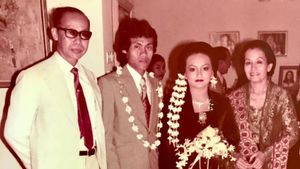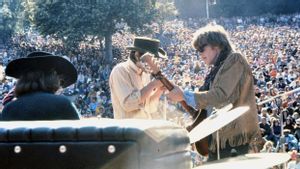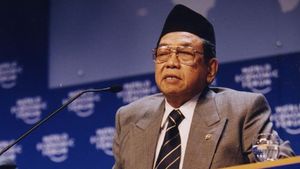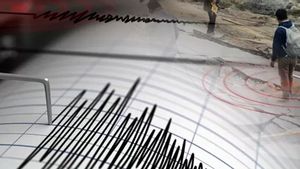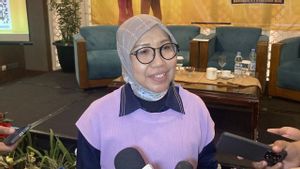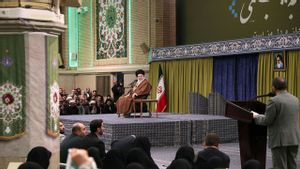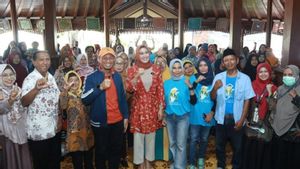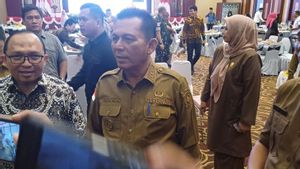JAKARTA - Sarwo Edhie Wibowo was furious, his friend and protector became a victim of the September 30th Movement (G30S). Having received a mandate from Suharto, the Commander of the Army Para Command Regiment (RPKAD) then led the crackdown on the Indonesian Communist Party (PKI). The mission was carried out full of revenge. He even branded PKI on the Hero Statue at Tugu Tani and wanted to crush it.
Suharto immediately took action to restore the situation exactly the day after the G30S was launched. He took command from his desk at Kostrad on October 1, 1965. Suharto immediately filled the leadership vacancy in the Army (AD) because General Ahmad Yani was one of the victims of the so-called communist rebellion.
For Suharto, there had to be consequences for the kidnapping of generals – and then being killed – by troops in the uniform of the Tjakrabirawa regiment. Steps were taken to suppress all elements of the PKI. In Suharto's eyes, the PKI was not the only culprit. Suharto branded the PKI as an act of non-religious people. Sarwo Edhie gave the mandate to clean up the PKI in remote parts of Java.
“Mas Harto's summons was then responded to quickly by Sarwo Edhie. Sarwo firmly stated that he was ready. This is the beginning of the Suharto-Sarwo collaboration, which later became a very close duet during the PKI eradication action," said Suharto's younger brother, Probosutedjo in a book written by Alberthiene Endah, Saya dan Mas Harto (2013).

The opportunity was not fully taken by Sarwo Edhie, who had a bitter grudge against the PKI. His friend and protector, General Ahmad Yani at that time became a victim. Emotionally both of them were born and raised in Purworejo. All the Indonesian people then together to crush all things that smelled of PKI.
The mass massacre is inevitable. Everything related to the PKI was immediately crushed, be it members, sympathizers, or people accused of the PKI. Even they, the Soekarnoists, became victims too. The team of investigators from the Fact-Finding Commission revealed that the number of victims of the massacre reached 78,000.
However, Sarwo Edhie, who was directly involved in the crackdown, said the number was relatively small. Because, from the data he has personally, the victims of the massacre reached three million people. "The moderate estimate does put the figure at 500,000. Other calculations are between one million and two million."
"But Sarwo Edhie, who was in the field after the incident, both in Central Java, East Java, and Bali, once mentioned the figure of three million people. Until the end of his life, Lieutenant General Sarwo Edhie Wibowo never even corrected the total number. victims that he has mentioned," explained Rum Aly as quoted by Julius Pour in the book 30 September Movement: Actors, Heroes & Adventurers (2010).
Statue of a Hero branded as PKI

Sarwo Edhie's bitter grudge against the PKI continued. Even though the PKI massacre has become an old song, his hatred for the PKI has never been extinguished. He expressed his hatred again in an interview ahead of the Pancasila Sanctity Day, October 1, 1983. The former RPKAD commander called for the 'Heroes of the farmer and his wife at Tugu Tani to be put into a museum.
Sarwo Edhie considered the statue of a farmer holding a rifle with a drawn bayonet and a gun as the incarnation of the PKI. The statue of Pak Tani is the fifth generation of the PKI. Moreover, he considered the statue a gift from the Soviet Union, which in fact was communist.
“The statue is a statue of Farmer Communist. Where are our farmers who are so arrogant? There is not any! Where in Indonesia is there a proud farmer? Our farmers are polite," said Edhie, quoted from a Tempo Magazine report entitled After 17 Years, the Statue Debate (1982) told how Sarwo Edhie rejected the statue given by the Soviet government.
"If the statue of Pak Tani BTI (Barisan Tani Indonesia) - an organization affiliated with the PKI, should we continue to install it?" added Edie.

Sarwo Edhie's opinion immediately provoked pros and cons. One of them who has the opposite opinion is the Vice President of Indonesia, Adam Malik. He doubted it. Adam Malik who was involved in the process of creating the statue gives the true picture.
According to Adam Malik, the statue actually enshrines the freedom fighters who captured West Irian in 1960-1962. Alias has nothing to do with Sarwo Edhie's accusation. According to Adam Malik, the Statue of Heroes had been prepared long before the G30S rebellion broke out. That is, it is a big mistake if the Statue of Heroes is called the fifth generation of the PKI.
Adam Malik, who was annoyed, even talked about the origin of the idea of the Hero Statue. Adam Malik recounted that the idea arose when Bung Karno visited the Soviet Union in 1960. Bung Karno, who was fascinated by the monuments and statues in the Soviet Union, immediately asked Adam Malik – who was then the Ambassador in Moscow – to find a famous Russian sculptor, Matvey Manizer.
In the hands of Manizer, Bung Karno wanted to entrust the agenda of making a statue of the struggle for the liberation of West Irian. Adam Malik then told Matvey Manizer about making statues. The famous Russian sculptor immediately agreed. He then invited his son Otto Manizer to make a Hero Statue.
In the process of creating the statue, both were inspired by folklore from West Java. Which, the story is about the love of a mother who takes her child to fight. The mother then gave provisions in the form of rice to her son.
As a result, the two Russian artists made a statue of the Hero in the form of a farmer's pack from bronze. The statue in the form of a gallant farmer was inaugurated by Bung Karno himself in 1963. All oblique comments regarding the statue seem to be silenced by a plaque near the statue bearing a message from the son of the dawn, Bung Karno: A nation that respects its heroes is a great nation.
“However, a lot of criticism has been leveled against this statue. He said the body shape and facial expressions of the farmer and the woman in the kebaya looked more like Caucasians than Indonesians. but well, I think it was deliberately made to make it look dashing,"
If they were made to look like Indonesian farmers, with a snub nose and thin body with prominent ribs, it wouldn't be cool, heroic, and attractive, would it? After all, aren't we generally looking for actors in our films and soap operas who have an Indo or half Caucasian face?” closed Firman Lubis in the book Jakarta 1950-1970 (2018).
*Read other information about HISTORY or read other interesting articles from Detha Arya Tifada.
Other MEMORY
SEE ALSO:
The English, Chinese, Japanese, Arabic, and French versions are automatically generated by the AI. So there may still be inaccuracies in translating, please always see Indonesian as our main language. (system supported by DigitalSiber.id)
